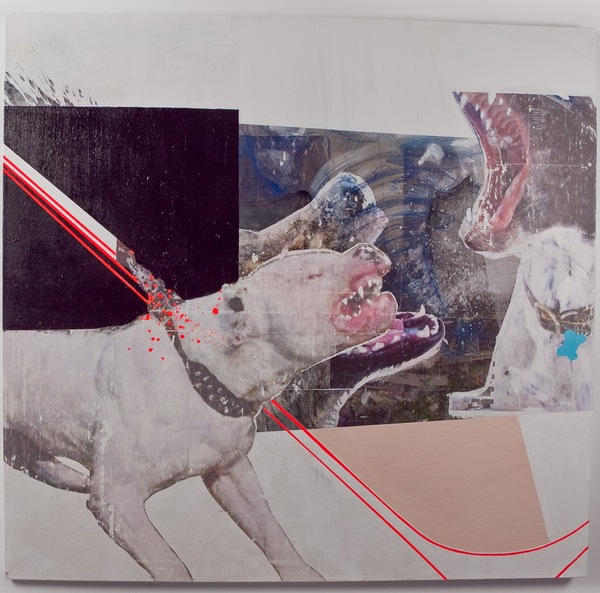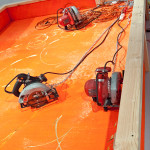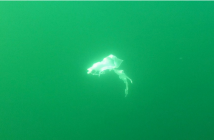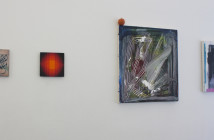War's dogs are out and about. We should know this. A thousand Americans dead in Afghanistan, and the number of slaughtered civilians only an underestimated approximation. But we are not keen to have such news. In a recent essay on the disappearance of journalism, the reporter Chris Hedges declares that "in an age of profound culture decline...manipulation is more highly valued than truth..." This insight applies equally to the challenge of Phil Lique's art, with its demand that we look at the world as it is, and not distorted by our delight in indifference.
The five paintings that circle the gallery are windows thrown open inside a sealed observatory, a community of images that is impossible to imagine as disconnected. Even if each were hung apart in widely separated locations, they would still be threaded to each other like frames in a surveillance camera tape.
Here, inverting the zoo, we look out on a landscape like the one where the crows slowly congregate on Alfred Hitchcock's monkey bars, or a killer whale at SeaWorld revises the script of its jail house circus. The marine predators of this vision are not one of Damien Hirst's bottled fishes, but avid accountants come to settle scores (as also in Lique's Shark: American Dream an assemblage of fury and outraged consumption now at the 2010 DeCordova Biennial).
All that human defiance can manage are the slashing diagonals like tracer bullets or missile tracks, grids pieced from the tiles of abandoned subway tunnels, or the pathos of a laptop computer opened onto an animal¹s disdain, a memorial to that hopeful activist who went among grizzlies, and was eaten. Ghost aircraft circle a fawn¹s corpse in testimony to the indiscriminate ways of violence.
The silence pushes and pulls across the space, as if the roars and howling are on a timer that could release the paused sound at any moment. Here the animals make their alliances. They echo Margaret Atwood¹s recent dystopian novel, The Year of the Flood, where a genetic combination of lion and lamb, meant to realize an Old Testament prophecy of universal tranquility, yields instead a carnivore with wool.
But Lique understands that the threat of an enraged Nature is not all that haunts us. Every one of our inventions holds the potential for self-destruction. At the center of the exhibition space is an installation that stands like a mangled sandbox recently used as an autopsy room table. A trio of circular saws lie inert inside it. To create the work, Lique powered these up, each at the end of a chain like an unfed hound, and let them go.
There is no no need to imagine some future cyborg declaring its murderous independence. We are already surrounded by domestic machines capable of turning on us, as these saws, even when shackled, threatened to do before they slit each other¹s power cords. But this is one of those dreadful fictions of peace, lasting only until someone splices the wires and once again flips the switch.
- Phil Lique, Direction and Force as Determined by Natural Means, mixed media, 2010.
- Phil Lique, Regulated and Controlled: Population Thinking, mixed media, 2009.
- Phil Lique, Evidence of Competitive Natures, mixed media, 2010.
"Phil Lique: Traces of Things That Are Alive and Dead " is on view through March 20th at Artspace is located at 50 Orange Street in New Haven, CT.
All images are courtesy of the artist and Artspace.







